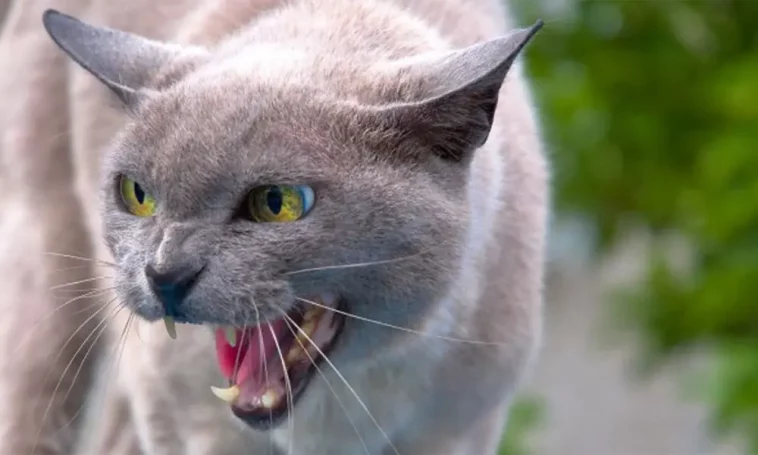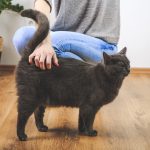Cats with no visible nose
There are true lovers of this type of cat breed, which is characterized by having a flatter face, almost flat, since the muzzle and ‘nose’ area is integrated into the skull in a wider and shorter facial portion. This causes their eyes to stand out more, to be more bulging and their expression to intensify. They are cats with a sweeter appearance and at the same time capricious.
But they are not breeds that we can consider ‘natural’ because they have been artificially prioritized by the crosses that humans facilitated in the search for specific aesthetic traits, thus it has been possible to isolate stable cat breeds with a specific characteristic: they are brachycephalic, but in addition to their funny appearance, they suffer from serious health problems.
Brachycephalic banned in some countries
In countries like Norway or the Netherlands, the breeding of brachycephalic dogs such as bulldogs and pugs is prohibited. However, the legislation of these countries has not yet ruled on cats that have a similar morphology. The problem is that its muzzle is much shorter and integrated into the face, which makes its nasolacrimal duct very small.
The first consequence is that they breathe with great difficulty, and that in turn makes it difficult for them to move agilely. They neither jump nor run like other cats, so they are prone to developing obesity as a result of the extreme sedentary lifestyle that their physical characteristics force them to adopt.
They are calm because they cannot take on a busy life
Among all the brachycephalic cats, perhaps the one that presents a more original face and that before it is obvious that it does not have a muzzle external to the skull is the so-called exotic shorthair cat. This cat is stout, has short legs, is medium in size, and its flat nose is more than evident.
They are especially calm cats, they love peace and solitude, among other reasons because they get very upset when there is activity, since their breathing does not allow them to follow the pulse of a lot of physical exercise. It comes from the United States, and was the product of selective breeding between American short-haired cats (the famous ‘short hair’) and Persian cats.
Burmese cat
At the beginning of the 20th century, a selective cross between Persian and Siamese cats was carried out, and the result was what we know today as the Burmese cat, although it does not come from Asia but from France.
They are very friendly creatures that develop strong bonds with the humans in the house, and that do not present any difficulty in relating to children despite their reputation for being mischievous. Among the brachycephalic breeds, it is probably the most active breed, and this is because their snouts are slightly raised and that allows them to breathe better. In any case, by counting, the brachycephalic breeds are the Burmese, Himalayan, exotic shorthair and Persian.
They don’t regulate their temperature.
An added problem to the difficulties in breathing correctly in brachycephalic cats is related to the impossibility of regulating their body temperature as other cats would do, this is the fundamental reason why they refuse to make considerable physical efforts that may overheat them and require superior ventilation.
It is also one of the reasons why they endure heat worse in general. This situation makes them vulnerable to heart problems, obesity, deformed teeth, frequent vomiting and, in short, they have a shorter life expectancy.
Uneven tooth development
As the owner of a brachycephalic cat, be it Persian, Himalayan, exotic shorthair or Burmese, a fundamental piece of advice is to monitor the cat’s dental development because, since its skull is forced to keep the nasal area in the same space, it is the denture which can be altered by developing incorrectly or with dental conditions.
Proper dental hygiene is essential in every pet, but in brachycephalic cats it is completely essential.
More tears than usual
The lachrymonasal zone of the brachycephalic cat is integrated into the skull and this produces greater tearing that is not an anecdote but a constant in them.
This makes them very sensitive and prone to eye infections, it is essential that you keep this area clean and that the cat’s watery eyes do not trigger an eye infection. His eyes need more follow-up from the vet, who will be able to recommend drugs to care for his eyes and minimize the possibility of infections.
Other serious illnesses
It is not uncommon for brachycephalic cats to develop polycystic kidney disease, a congenital disorder that produces cysts in the animal’s kidneys. These cysts are already present at the cat’s birth, but it is not possible to detect them because at first they do not interfere with its health because they are very small.
However, as the animal grows, these cysts grow with it and can seriously damage the cat. kidney. This disease occurs mainly in the Himalayan breed of cats and is hereditary, so all litters of the same specimen may develop it.
Feline Hypertrophic Cardiomyopathy
Without having to do directly with the breathing problems of brachycephalic breeds, the truth is that these cats carry other very serious health problems. The reason is that, when the specimens that founded these breeds were selected, aesthetics prevailed and not health, therefore the genetic traits they maintained were prone to diseases or congenital malformations that did not matter too much in exchange for having a breed ‘flat’ skull.
These conditions include feline hypertrophic cardiomyopathy,which is a very common heart problem in brachycephalic cats and which is shown by panting, rapid and open-mouthed breathing and total disinterest in playing or interacting, giving the false sensation of being docile when what really happens is that the cat does not feel he feels balanced and sees his well-being in constant danger.



